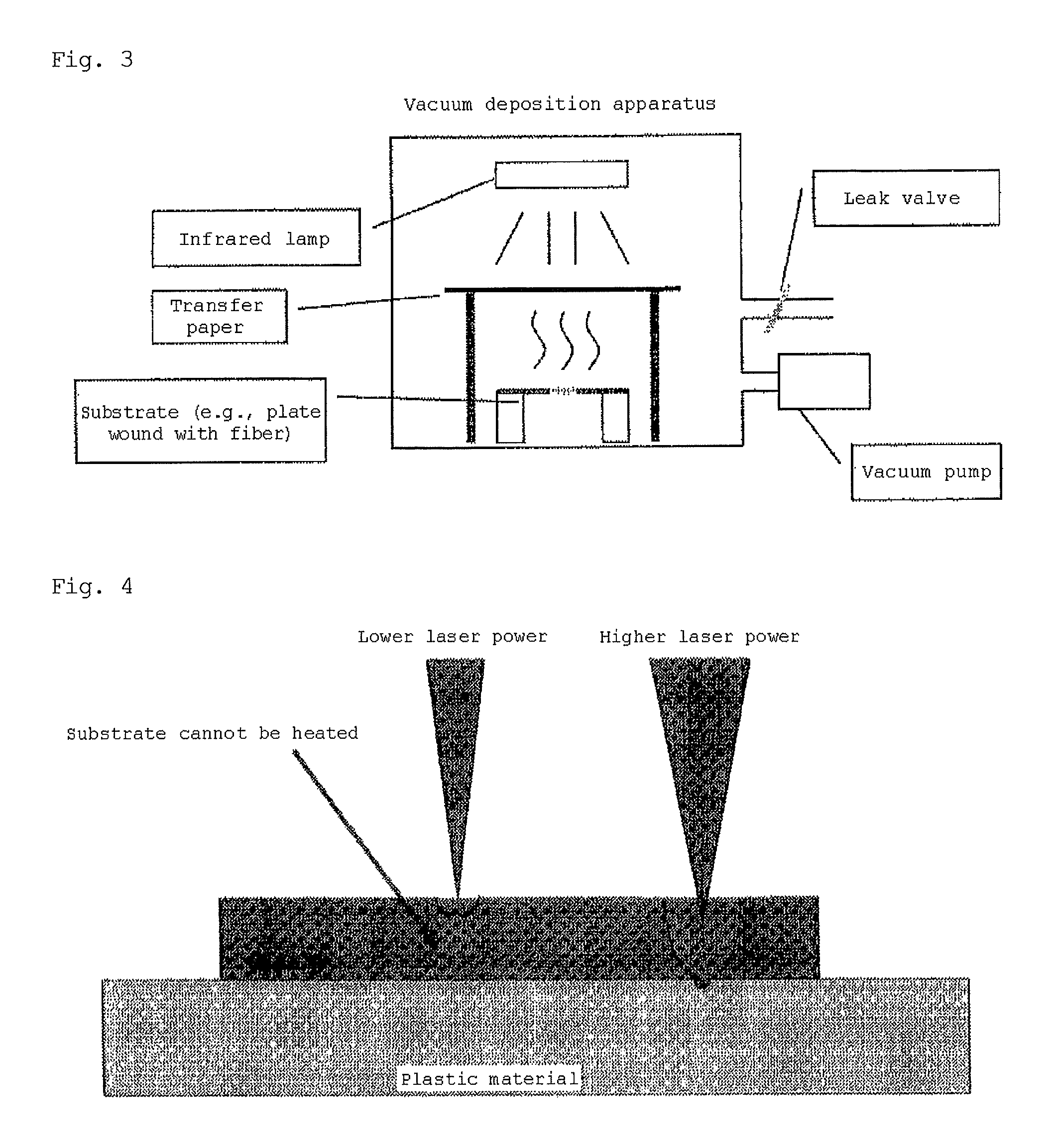Laser marking method
a laser marking and laser technology, applied in the field of laser marking methods, can solve the problems of high output energy, large size of the resulting mark, and significantly inferior clarity and solidity of the laser marking method, and achieve the effect of effectively preventing counterfeiting of brand name products, high solidity, and easy determination
- Summary
- Abstract
- Description
- Claims
- Application Information
AI Technical Summary
Benefits of technology
Problems solved by technology
Method used
Image
Examples
examples 1 to 12
Experimental Device
[0136]The laser irradiation apparatus 1 shown in FIG. 6 includes a laser irradiation means 2 integrally comprising a violet laser diode (VLD) as a laser oscillator 21, a collimate lens, and a correcting plate to which wavefront correction had been applied. The emitted light was reflected downward at a right angle with a beam splitter 4 and was focused on the surface 6 of a substrate W by an objective lens 5. The state of the irradiated portion of the surface 6 was then observed by using a measurement means 13.
Disperse Dye and Formulation
[0137]C.I. Disperse Blue 56 (blue), C.I. Disperse Yellow 64 (yellow), and C.I. Disperse Red 60 (red) (disperse dyes; 10 wt. %), 20 wt. % of a dispersant (Demol MS, produced by Kao), and 70 wt. % of pure water were mixed and dispersed to fine particles using a bead mill. The mixture was then suction-filtered through a filter with a pore size of about 1 um (glass fiber filter paper GF / B) to remove large particles, waste, etc. Pure wa...
example 13
[0148]A dye was applied to sheet-like polyethylene terephthalate (PET) substrates and polycarbonate (PC) substrates by the vapor-phase transfer method in the same manner as in Examples 1 to 12 so as to have film thicknesses shown in Tables 2 to 5. The dye used in Example 13 was a disperse dye, C.I. Disperse Blue 56 (blue). Subsequently, the substrates on which the dyes had been applied were irradiated with a laser beam to print the letters “HAMAMATU” in the same manner as in Examples 1 to 12. In this case, the output power of the violet laser diode was about 42 mW, and pulsed wave (PW) was used. The movement speed of the XY stage 8 was 0.3 mm / s. The pulse frequency was 200 Hz, and the duty ratio of the pulse width was 1 / 16. The spot diameter was 8 μm with a half bandwidth. The laser energy was adjusted using filters (30% attenuation filter: AND-50S-30, 50% attenuation filter: AND-50S-50, and 70% attenuation filter: AND-50S-70). Tables 2 to 5 show the relationships between the film t...
PUM
| Property | Measurement | Unit |
|---|---|---|
| width | aaaaa | aaaaa |
| thickness | aaaaa | aaaaa |
| width | aaaaa | aaaaa |
Abstract
Description
Claims
Application Information
 Login to View More
Login to View More - R&D
- Intellectual Property
- Life Sciences
- Materials
- Tech Scout
- Unparalleled Data Quality
- Higher Quality Content
- 60% Fewer Hallucinations
Browse by: Latest US Patents, China's latest patents, Technical Efficacy Thesaurus, Application Domain, Technology Topic, Popular Technical Reports.
© 2025 PatSnap. All rights reserved.Legal|Privacy policy|Modern Slavery Act Transparency Statement|Sitemap|About US| Contact US: help@patsnap.com



